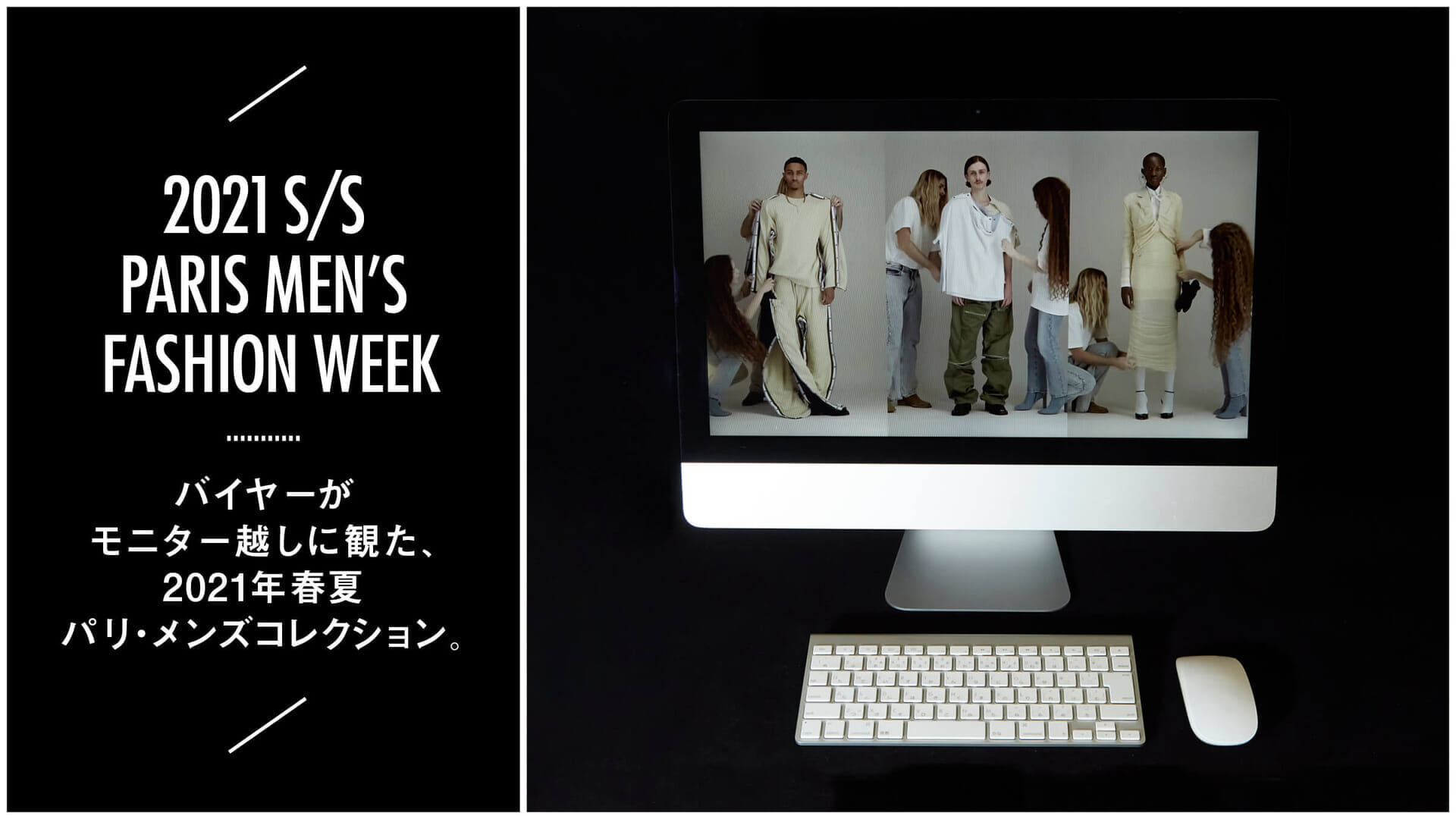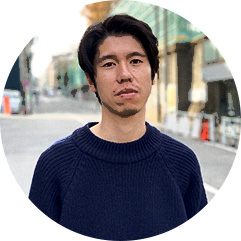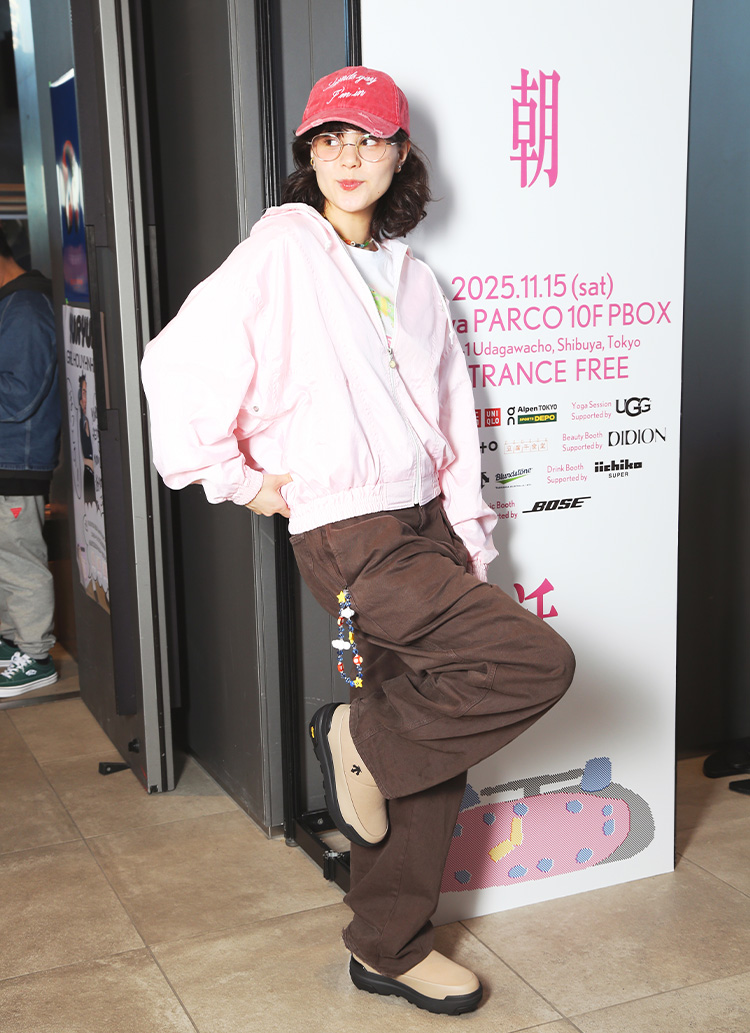BUYER 02 Beyond the expression, it is important to be able to see the clothes of the season.
PROFILE

Men's Director of "International Gallery BEAMS" . born in 1971. He started working at "BEAMS Ginza" as a part-time employee when he was in college, and joined the company after graduation. He has been in charge of the men's department at "INTERNATIONAL GALLERY BEAMS" since 2006, and has been in his current position since 2002.
www.beams.co.jp/international_gallery_beams
. What brands have made a deep impression on you in the Paris Men's film?
The Y.Y. Project video was very innovative in terms of content and structure. We, as buyers, have the role of getting a sense of the mood and atmosphere of a brand through shows, etc., while at the same time having to keep a close eye on the details and materials of the clothes. On top of that, it is our job to purchase things. Y-Project's presentation, which is a kind of "demonstration" in which the models change clothes one after another, is a one-way street in that the recipient can understand the transforming clothes down to the smallest detail. It was good that it was not a one-way presentation.
Y Project" took an easy-to-understand way to show "how it can be worn" with increasingly different styling and complex clothing.
Common Sweden" genuinely reminded me of the feeling I usually get when I watch a show. They understood how we, the viewers, were looking at the clothes from our seats, and this was reflected in their camera work. The third was Kris Van Assche's Berluti. The third was Kris Van Assche's "Berluti," which gave us a glimpse of the process of creating clothes in collaboration with artist Brian Rochefort. It was a documentary-like presentation that captured the "behind-the-scenes" that cannot be conveyed in a runway show alone, and I think it was truly a presentation that could only be expressed through digital technology. Also, although not in Paris, I was very interested in Prada's work.
Common Sweden" models walk down a runway surrounded by ears of rice. The models' front, side, and back views were cut in detail, with focus on details such as the sleeves and neckline.
Berluti" consisted of interviews with Kris Van Assche and collaborator Brian Rochefort. The video was documentary-style, showing the atelier of each of them.
Prada" was a multifaceted show with five creators of different types, each with a different way of expressing themselves. I personally felt nostalgia for the mood of the late 90s in this collection," said Hattori. "In particular, photographer Martine Sims (Chapter 4) chose a slightly crude mix of digital and analog expression reminiscent of the 90s and combined it very well with the clothes themselves. It was wonderful," said Hattori.
What are your thoughts on the Digital Fashion Week as a whole?
There was a strong tendency to emphasize mood rather than clothes, and unfortunately, there were very few brands that fulfilled the show and collection elements well. From the standpoint of buyers and directors, considering the main purpose of the fashion week, which includes exhibitions and showrooms, of course, they cannot do business with each other unless the clothes are well presented. Various methods of expression are good in themselves, but beyond that, I realized once again the importance of being able to see the clothes of the season.
I can't see the samples in person.
The biggest drawback is that you can't actually wear the garment, so you can't accurately grasp aspects such as balance, comfort, atmosphere of the material, and weight. On the other hand, I believe that orders will increase for items that can actually be viewed in the showroom.
What brand is it exactly?
. for example, domestic brands. Because of this situation, individual consumption itself tends to wilt. Unlike domestic brands, which do not have a high unit price, or foreign brands, which cannot grasp the delivery time issue, there is a great advantage in being able to grasp this area.
Do you notice any changes in the end-user's clothing preferences?
Originally, in the "International Gallery BEAMS" division, there are a great many people who buy clothes according to TPO. They think about how they want to express themselves in the society that surrounds them, and there has always been demand for clothing that meets their objectives and standards. . I believe that this aspect will become stronger in the future. For example, as online communication becomes more mainstream, the so-called place of business will shift. For example, as online communication becomes the mainstream, the so-called "place of business" will shift. We believe that the online fashion and community will be created and that what is needed there will be chosen.
. So it is closely connected to the changes in life and behavior that are taking place in the present tense.
. you take it pretty strongly - you would never wear a jacket that is hard to move around in while using a PC, would you? . Naturally, since only the upper half of your body is visible on the screen, bottoms that can be worn on and off may become a requirement. If working from home takes up half of the week, there will be fewer opportunities to wear dress shoes themselves, and the speed at which such shoes become useless will slow down, so there will be no need to have so many pairs. . Apart from this, among those who want to express themselves, there are still people who purchase items after actually wearing them. While taking into account the growing demand for each item, we believe that segmentation will become more pronounced while narrowing down the target.









